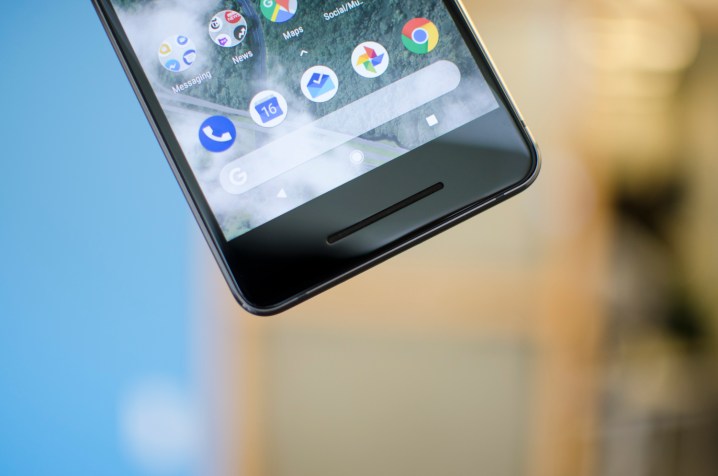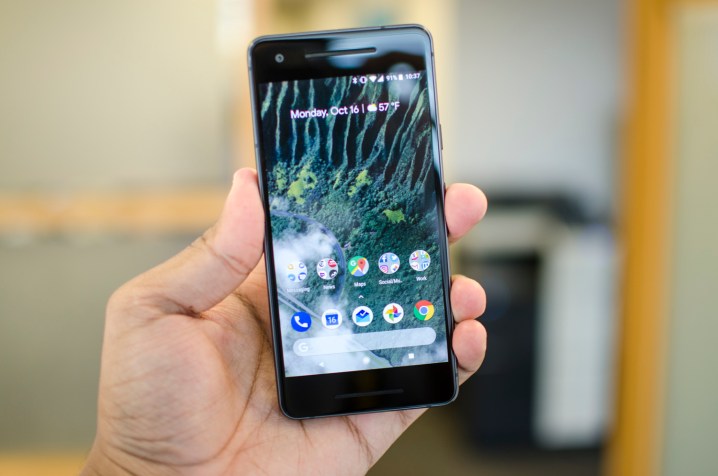Need to capture the screen on your Google Pixel or Pixel 2 smartphone? Fortunately, taking a screenshot with the Pixel is very similar to doing so on other Android devices, and only takes a few seconds. Let’s walk through how to take a screenshot on a Google Pixel device.
Taking a screenshot with the Pixel
Let’s assume your Pixel is in your hand and turned on. Here’s what you need to do to take a quick screenshot.
Step 1: Navigate to the page or screen you want a screenshot of. It’s not necessary to close out of any other apps or webpages, just make sure that the Pixel is showing what you want to capture.
Step 2: On the right side of your Pixel phone, there is a power button and a larger, dual volume button. Press the Power button and the Volume Down portion of the volume button simultaneously. Hold them down for a couple seconds. It may take a little practice to get this right.
Step 3: You will notice a quick flicker, a sign that the screenshot has been taken. A screenshot icon screen will appear in the notification bar at the top, and if you swipe down, you should see a Screenshot captured notification to let you know that the process was successful.
More guides and best-ofs
- How to record your computer screen
- How to take a screenshot on a Mac
- How to take a screenshot on an iPhone
Reviewing your screenshot
You’ll want to check your screenshot and see how it looks. When the notification pops up, you can swipe down to expand it. This will bring up the full screenshot so you can review it more carefully. You can choose to Share or Delete it directly from this notification.
Looking through all your screenshots

If you’ve taken several screenshots or aren’t sure just how many screenshots are stored on your Pixel, there’s an easy way to check. Once you take a screenshot, the Pixel will automatically save the image, and will keep saving and storing any further screenshots.
Step 1: Find these screenshots by navigating to your Photos app, which should sport a colorful pinwheel logo. Once the app is open, select the three lines that indicate the Menu button.
Step 2: In the Menu, look for the option that says Device folders. One of the folders should be called Screenshots. This is where your Pixel deposits all the screenshots you take. You should be able to open this folder and view your screenshots, as well as delete or move them as you wish. To quickly share any particular screenshot, just select that screenshot and then choose the three-dot Share button.
Troubleshooting screenshots

Sometimes if you take a screenshot, you will get a message that says, “Couldn’t capture screenshot” or something similar to show it’s not working. Or perhaps you go over to your photo folder and find that the screenshot wasn’t saved properly. Here are a few things you can do try to get your screenshots working properly.
Check for updates: Sometimes updates create bugs with the screenshot process. Look for new updates that patch the issue.
Close your other apps: Sometimes another open app can interfere with a screenshot being saved. Make sure other apps are fully closed, then try again.
Check your storage: Is your Pixel storage getting a little full? The phone may be rejecting the image for that reason. Take a look in Settings > Storage to check. If that’s the problem, then go through your photos and delete what you can to free up some extra space, then try taking the screenshot again. You can also clear out your cache if you want.
Rename your screenshot folder: Just call it something basic, like “New Screenshots” or whatever works for you. It’s not clear why this works, but it looks like sometimes the Pixel can get confused about the right folder destination for screenshots, and renaming the folder helps to reset the process and clear up a bug.
Editors' Recommendations
- A new Google Pixel Tablet is coming, but it’s not what you think
- Best Google Pixel deals: Save on Pixel 8, Pixel Buds, and Pixel Watch
- Google Pixel 8a: news, rumored price, release date, and more
- The Google Pixel 8a leaked again, and now I’m nervous
- This Google Pixel 8a leak just spoiled everything about the phone


